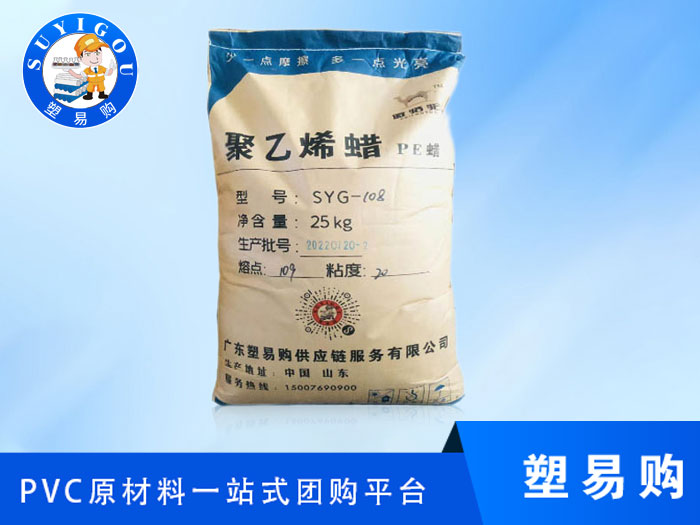Early, medium and late performance division
Initial lubrication refers to the lubrication from the feeding section to the compression section; mid-term lubrication refers to the lubrication from the melting section to the metering section; late lubrication refers to the extrusion from the metering section to the die Lubricating effect until molding. Generally speaking, substances with a low melting point are highly volatile, such as paraffin, stearic acid, n-butyl stearate, etc., which are all initial lubricants and are not easy to add.
PE wax, OPE wax, lead stearate, calcium stearate, etc. have higher melting points, generally above 100°C, with low volatility, and are lubricants in the middle and late stages. The role of lubricants in each section of extrusion molding is different. In a conical twin-screw extruder, it is very important that the material starts to plasticize at the proper position of the screw and the degree of plasticization. Because premature plasticization will reduce the solid conveying efficiency, increase the heat product of the material, thereby reducing the thermal stability; too late plasticization will cause insufficient plasticization of the material and reduce the performance of the product. When adjusting the dosage, it should be configured according to the compression ratio and shear performance of each section of the extruder. If the material in the feeding section and the compression section is "under-plasticized", it means that the material in the vacuum hole is in a powder state, and the early internal lubricant can be appropriately increased; if the material in the feeding section and the compression section is "over-plasticized", it is manifested as a vacuum hole. If the melt is too smooth, or there is a phenomenon of hanging material, the early external lubricant can be appropriately increased; if the melting section and the metering section are "over-plasticized", it is manifested that the inner ribs are foamed and bent during the melt extrusion, and the medium-term external lubrication can be appropriately increased. Agent: If the transition section and the machine head are "overplasticized", the surface of the parison is yellowed, and the external lubricant can be appropriately increased in the later stage. The early lubrication is mainly based on the balance of internal and external lubrication, and the later lubrication is mainly based on external lubrication.

The inner and outer sliding are transformed into each other under certain conditions
Single lubricant lubrication is often limited. When choosing lubricant varieties, we must give full play to the coordination between lubricants. Due to the use of paraffin wax or calcium stearate alone, increasing the amount will increase the plasticizing temperature or decrease the plasticizing torque. When the two are used together, the external sliding effect is more significant. When the total dosage is 2 parts by mass, when the ratio of paraffin/calcium stearate is 3:1, the external sliding effect is the strongest. When the same amount is used together, the load of the extruder can be reduced, and the good mechanical properties of the product can be obtained. The combination of stearic acid and calcium stearate (barium) also has a similar effect. The total dosage is unchanged, and the ratio of calcium stearate (barium) increases, which will increase the plasticization speed and plasticization degree. Calcium stearate is an inexpensive internal lubricant and a heat stabilizer in the middle and late stages. When the dosage is 1 part, it does not affect the lubricating balance of the initial, middle and late stages, and lead stearate has already participated in the thermal stabilization when PVC is first heated and sheared, and begins to generate stearic acid, which can play an internal lubricant. effect. Combining low-melting and high-melting lubricants with similar chemical structures can produce two effects. The first is the melting point change. When the temperature rises, the low-point lubricant melts first. Due to the similar structure, it will penetrate or dissolve into the molecules of the high-melting point lubricant, that is, similar compatibility, weaken the intermolecular force, and reduce the melting point. It promotes melting and even forms a multi-component co-melt, which widens the temperature zone of boundary lubrication. For example, the melting point of calcium stearate can be lowered to 105°C after using 65°C paraffin and calcium stearate together. In addition, low-melting lubricants generally have lower viscosity at higher temperatures, and are prone to form an interfacial lubricating film. However, at higher melt pressure, the interfacial shearing effect is enhanced, and this low-viscosity interfacial lubricating film is easily destroyed. The high melting point lubrication has a viscosity-increasing effect on the low melting point lubricant, so that the interfacial lubricating film can still be kept well under the action of high shear.
Contact:
+86 13662789083/Miss zhengContact:
+86 13620073040/Mr. QianAddress:
Dongguan City Zhongtang Town Daxinwei RoadAbout us
-Company Profile -Company image -Video -Customer -Contact usProduct
-Plasticizer -Stabilizer -CPE -Stearic acid -More...Applications
-Resin tile application -Pipe and Fitting Application -Profile application -Cosmetic application -More...News
-Knowledge -Industry -QuestionMobile terminal
WeChat QR code
Applets